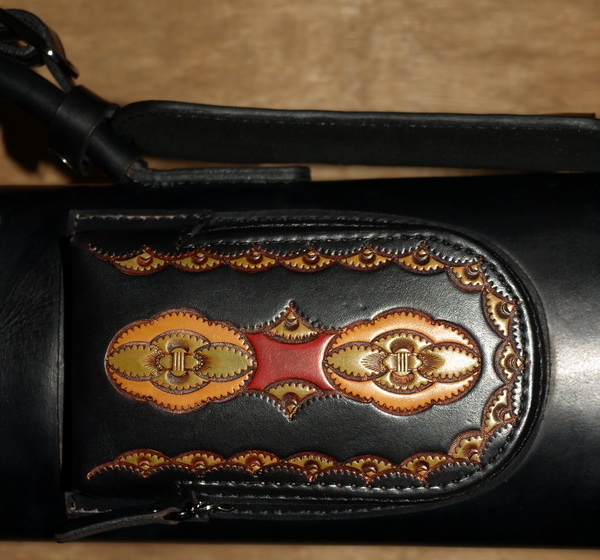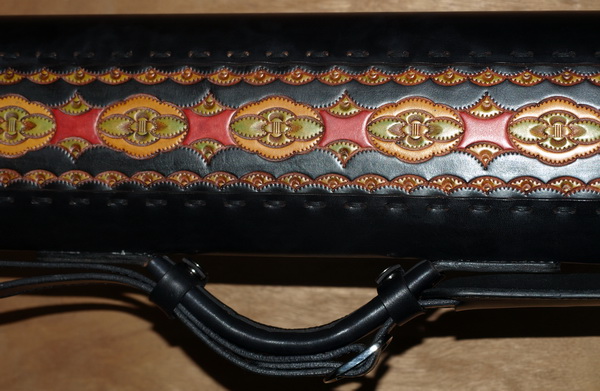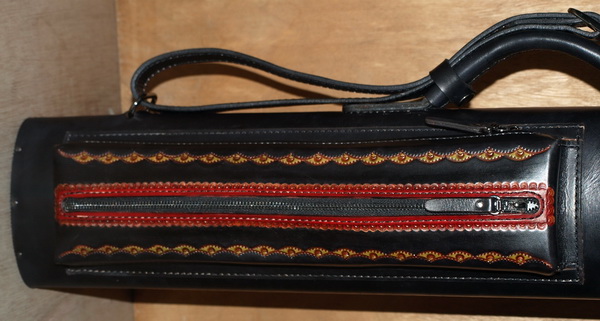The leather working industry rocks. Anyone who wants to become a leather worker has a super low barrier to entry because of all the great information out there for free or low money. One such resource is the Painting Cow Studio of Paul and Karen Burnett. They are experts in coloring leather. One of the books they sell is called Creative Stamping.

I bought these books last year with the intention to start doing a lot of cool stamping designs. Since then we have done quite a few interesting designs on the Mason case corners and started playing with many compositions.
This case represents the first one where we did the stamping design and colored it with contrasting colors. It is the beginning of a series where we play with the interaction of color and design using the same stamping pattern but alternating colors in different spaces.


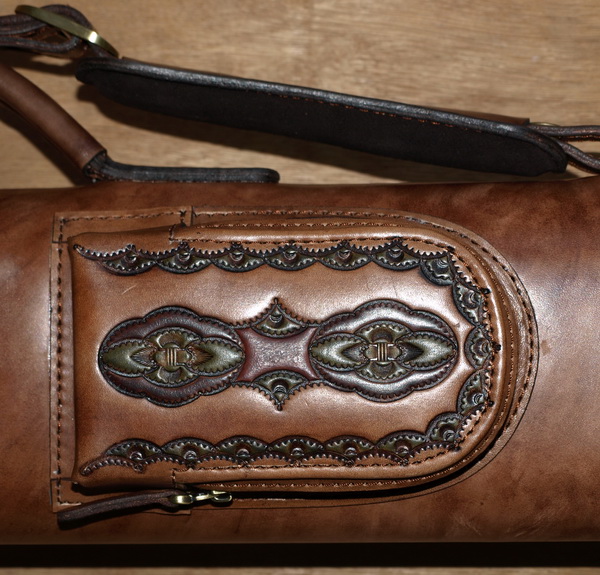
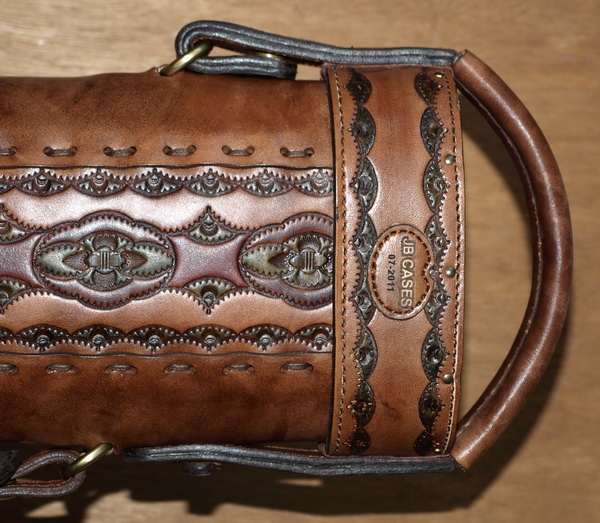

And here is the same design without the color left in brown tones.


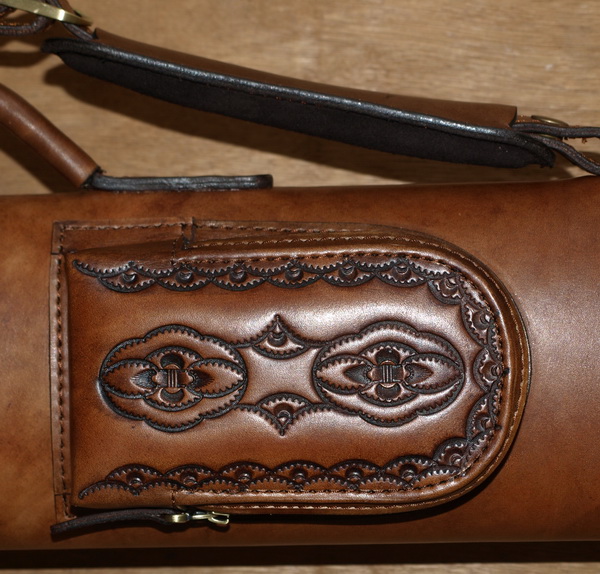
In a few days I will show one that is a little more wild. I have always admired what my friend Jerry Olivier can do with the same design when he chooses different woods and different inlays. He can have one cue be sort of subdued and another one that is magical by simply picking different combinations. We hope to achieve the same thing.
P.S. For the negative nellies - we are not copying any of Paul Burnett's examples. Although we could and I might because he grants permission to do so.

I bought these books last year with the intention to start doing a lot of cool stamping designs. Since then we have done quite a few interesting designs on the Mason case corners and started playing with many compositions.
This case represents the first one where we did the stamping design and colored it with contrasting colors. It is the beginning of a series where we play with the interaction of color and design using the same stamping pattern but alternating colors in different spaces.





And here is the same design without the color left in brown tones.



In a few days I will show one that is a little more wild. I have always admired what my friend Jerry Olivier can do with the same design when he chooses different woods and different inlays. He can have one cue be sort of subdued and another one that is magical by simply picking different combinations. We hope to achieve the same thing.
P.S. For the negative nellies - we are not copying any of Paul Burnett's examples. Although we could and I might because he grants permission to do so.
Last edited:


